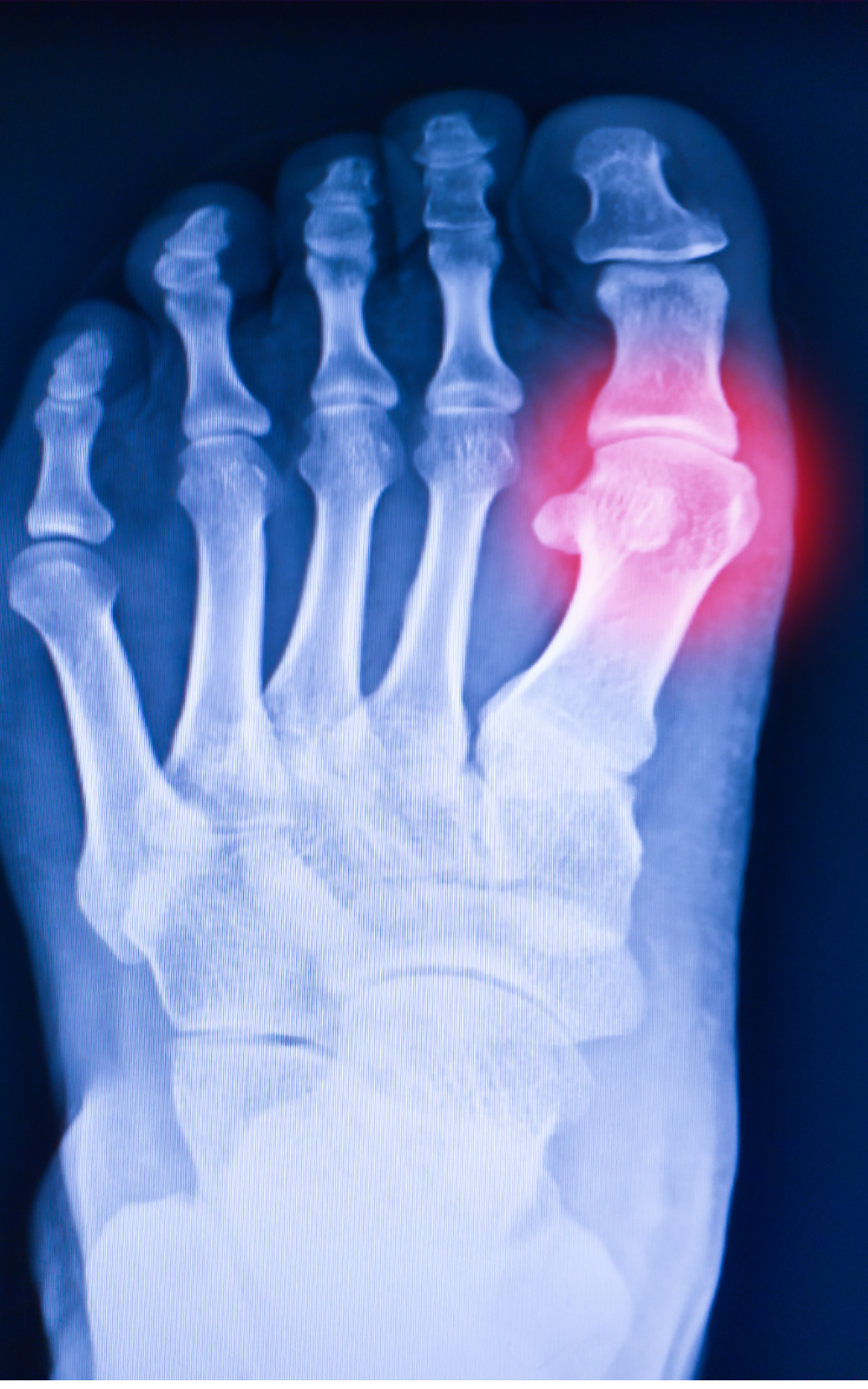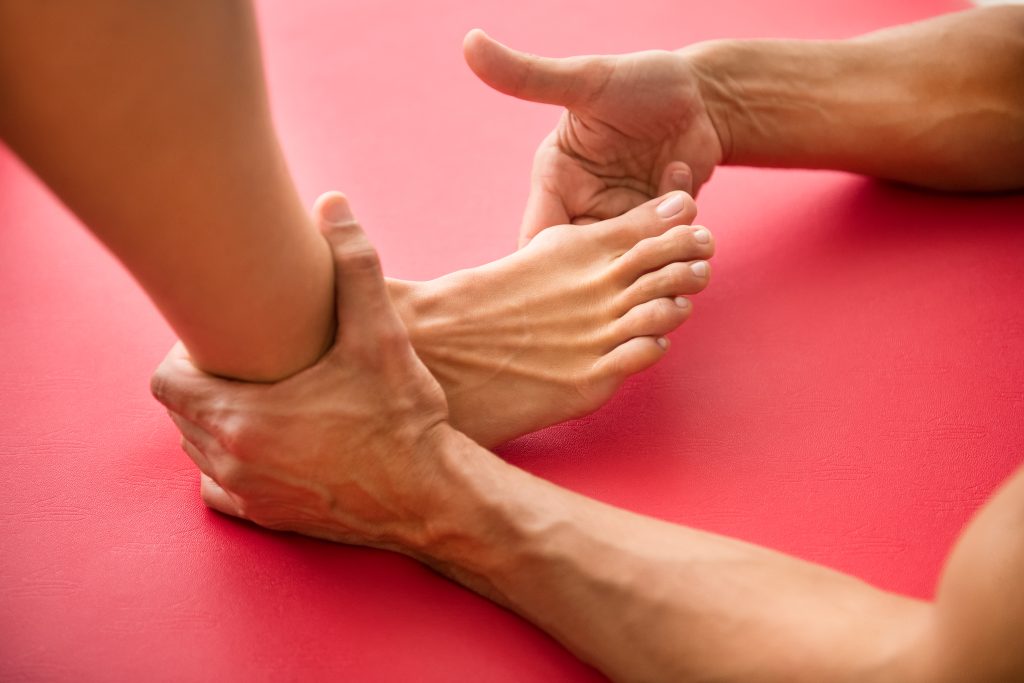Hallux Rigidus
Diagnosis & therapy
ÜBERSICHT
What is hallux rigidus?
Hallux rigidus(stiff big toe) is an arthrotic change in the metatarsophalangeal joint of the big toe. Due to the bony change, the loss of cartilage and the inflammatory change in the joint cartilage, movement is restricted. Rolling becomes increasingly painful due to poor mobility.
How does hallux rigidus develop?
Hallux rigidus develops over a long period of time. Due to chronic incorrect loading, obesity or after an injury to the big toe, cartilage damage occurs in the metatarsophalangeal joint. In the later stages of the disease, the otherwise round metatarsal head becomes rounded and bony protrusions form, which also increasingly restrict the mobility of the joint in functional terms.
Risk factors:
- Overweight
- Splayfoot
- Female gender
- Metabolic diseases (gout,...)
- Genetic predisposition
- Injuries to the big toe

Symptoms of hallux rigidus?
Due to the restriction of movement and the pain during the normal rolling movement, a poor posture is adopted. Increasing strain is placed on the outer edge of the foot, which can subsequently lead to transfer metatarsalgia (pain displacement of the metatarsal bones). The cartilage abrasion causes swelling and inflammation of the joint mucosa.
Possible symptoms
- Swelling, redness and inflammation of the metatarsophalangeal joint of the big toe
- Pain when rolling.
- Increasing irreversible wear and tear of the joint cartilage (=arthrosis)
- Restriction of movement due to the bony remodeling of the joint, among other things
- Disruption of the rolling movement
- Increasing discomfort in other parts of the foot (= transfer metatarsalgia) due to the altered gait pattern
How do you recognize hallux rigidus?
Patients consistently report painful rolling. Swelling and redness may also occur. Pain on clinical examination occurs on the extensor side. Bony processes due to chronic overloading of the joint can also be felt on the extensor side. Passive stretching of the toe by the orthopaedist causes a sharp pain.
The orthopaedist also examines the adjacent joints for movement restrictions. A standing X-ray shows the actual extent of the joint wear and the bony projections on the extensor side.

How is hallux rigidus treated?
The most important thing is to achieve a normal, pain-free gait pattern. As the arthritic change in a joint is an irreversible process, it is important to slow it down.
- Special insoles are designed to support the transverse arch of the foot, which is usually lifted.
- Physiotherapeutic exercises (traction, stretching exercises, foot muscle strengthening, etc.)
- Anti-inflammatory therapy in the form of ointments, tablets or infiltrations into the joint.
- Physical treatments
If the level of suffering becomes too great and conservative treatment has been exhausted, an orthopaedic surgeon can help.
How is hallux rigidus operated on?
There are two tried and tested methods that can be used depending on the stage of joint wear:
- Ceilectomy: Here, the painful bony projections are removed in a minor procedure so that movement is significantly improved again. The cartilage damage is not addressed, which is why this procedure is used more in the early stages of the disease. The advantage is permanent mobility.
- Osteoarthritis: In this case, the joint is completely stiffened. The joint cartilage is removed in its entirety, the two joint partners are pressed together and put under compression with 2 intersecting screws. The adjacent joints then compensate for the loss of movement in the joint so that a normal and fluid gait pattern is possible again without pain.
